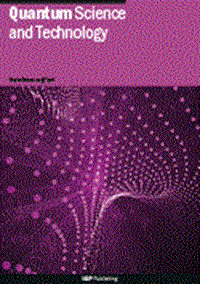An optical atomic clock using 4 D J ...
IF 5.6
2区 物理与天体物理
Q1 PHYSICS, MULTIDISCIPLINARY
引用次数: 0
Abstract
We analyze an optical atomic clock using two-photon transitions in rubidium. Four one- and two-color excitation schemes to probe the and fine-structure states are considered in detail. We compare key characteristics of Rb and two-photon clocks. The clock features a high signal-to-noise ratio due to two-photon decay at favorable wavelengths, low dc electric and magnetic susceptibilities, and minimal black-body shifts. Ac Stark shifts from the clock interrogation lasers are compensated by two-color Rabi-frequency matching. We identify a 'magic' wavelength near 1060 nm, which allows for in-trap, Doppler-free clock-transition interrogation with lattice-trapped cold atoms. From our analysis of clock statistics and systematics, we project a quantum-noise-limited relative clock stability at the -level, with integration time τ in seconds, and a relative accuracy of . We describe a potential architecture for implementing the proposed clock using a single telecom clock laser at 1550 nm, which is conducive to optical communication and long-distance clock comparisons. Our work could be of interest in efforts to realize small and portable Rb clocks and in high-precision measurements of atomic properties of Rb -states.使用 4 D J 的光学原子钟 ...
我们分析了利用铷中双光子跃迁的光学原子钟。我们详细考虑了四种单色和双色激发方案,以探测态和精细结构态。我们比较了铷原子钟和双光子时钟的主要特点。由于双光子在有利波长衰减,时钟具有信噪比高、直流电感和磁感低以及黑体偏移最小等特点。时钟询问激光器产生的 Ac 斯塔克偏移通过双色拉比频率匹配得到补偿。我们确定了一个接近 1060 nm 的 "神奇 "波长,它允许对晶格捕获的冷原子进行捕获内、无多普勒的时钟转换检测。通过对时钟统计和系统学的分析,我们预测量子噪声限制的-级相对时钟稳定性、以秒为单位的积分时间τ和相对精度为......。 我们描述了使用 1550 nm 波长的单个电信时钟激光器实现拟议时钟的潜在架构,这有利于光通信和远距离时钟比较。我们的工作对于实现小型和便携式掺镱时钟以及掺镱状态原子特性的高精度测量具有重要意义。
本文章由计算机程序翻译,如有差异,请以英文原文为准。
求助全文
约1分钟内获得全文
求助全文
来源期刊

Quantum Science and Technology
Materials Science-Materials Science (miscellaneous)
CiteScore
11.20
自引率
3.00%
发文量
133
期刊介绍:
Driven by advances in technology and experimental capability, the last decade has seen the emergence of quantum technology: a new praxis for controlling the quantum world. It is now possible to engineer complex, multi-component systems that merge the once distinct fields of quantum optics and condensed matter physics.
Quantum Science and Technology is a new multidisciplinary, electronic-only journal, devoted to publishing research of the highest quality and impact covering theoretical and experimental advances in the fundamental science and application of all quantum-enabled technologies.
 求助内容:
求助内容: 应助结果提醒方式:
应助结果提醒方式:


